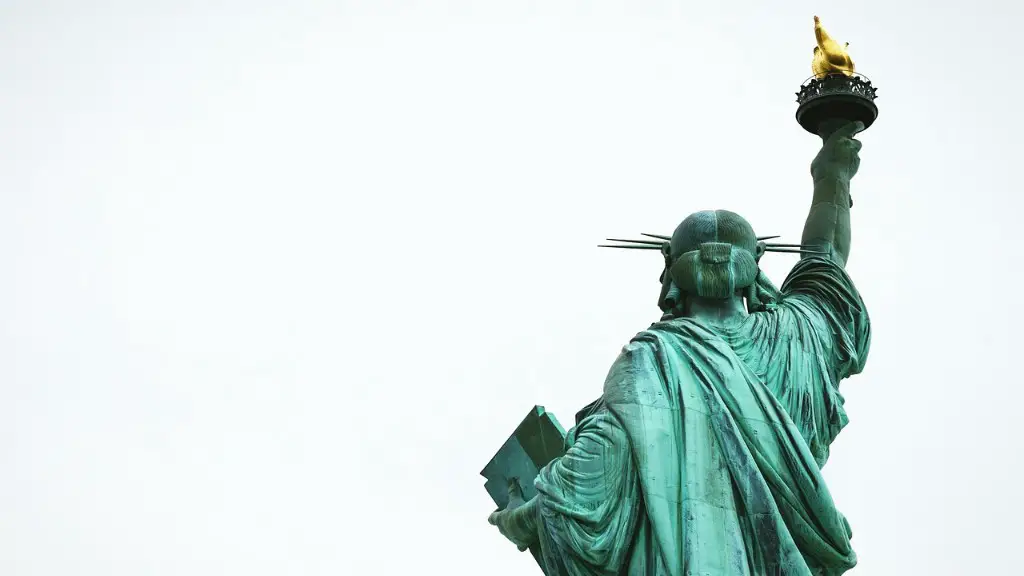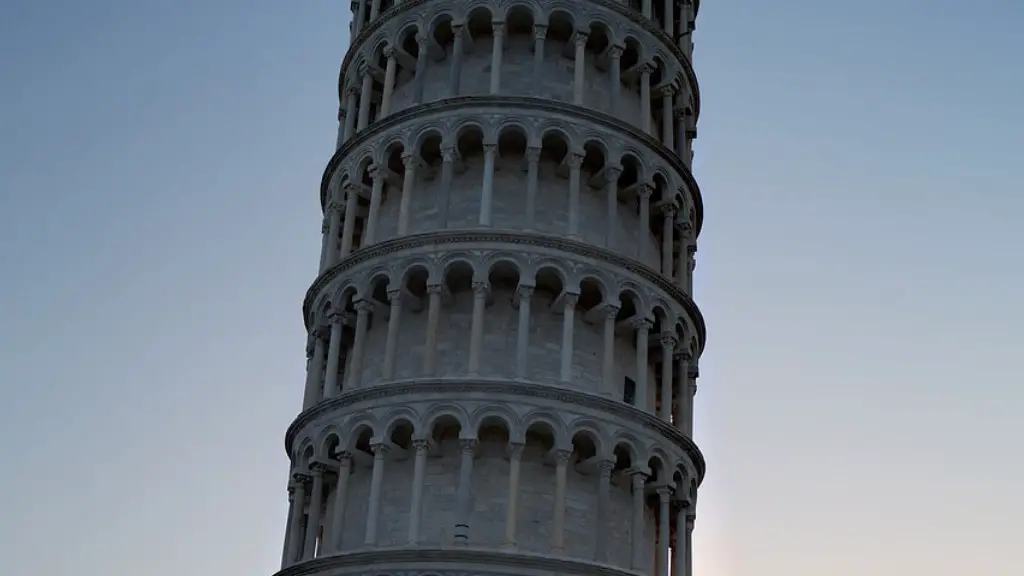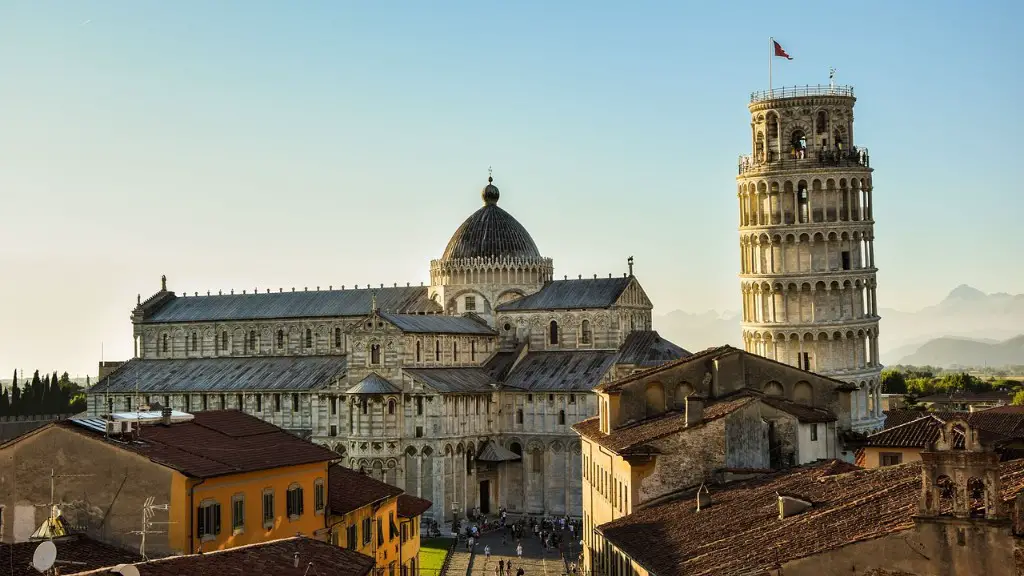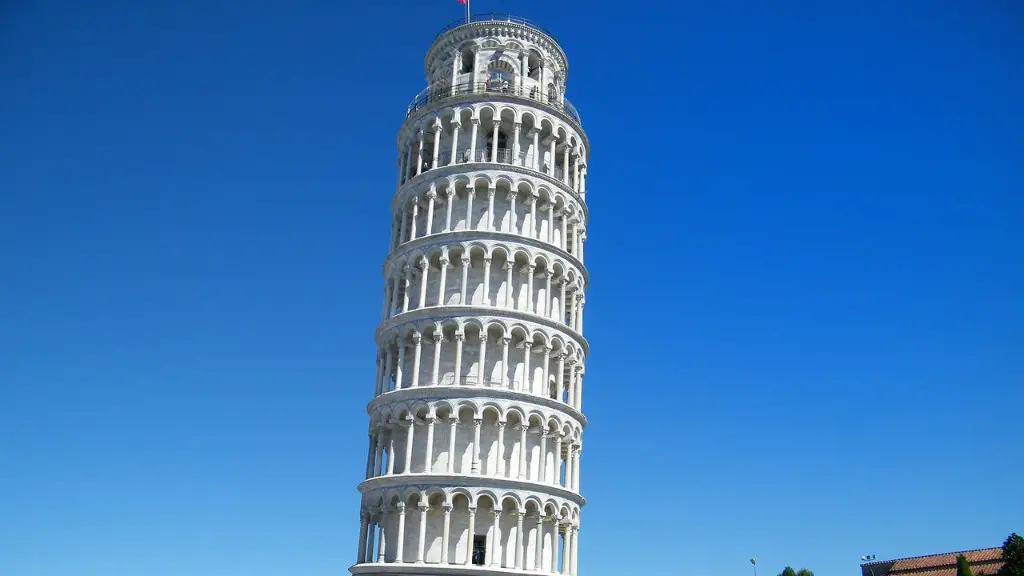Pompeii is one of the most iconic archaeological sites in the world. It is renowned for the eruption of Mount Vesuvius in 79 AD which destroyed the city and buried it under metres of volcanic ash. Countless numbers of people died from the force of the eruption and all human life in the city was extinguished. But what happened to Pompeii after the eruption? In this article we will explore in greater detail what Pompeii looked like after the disaster.
After the eruption, Pompeii was covered under a thick layer of ash which preserved many of its artifacts, including art and everyday objects, and transformed the city into a time capsule. The city became a grotesque landscape of twisted, charred buildings and broken glass. Some of the most iconic images of Pompeii include the skeletal remains of people who tried to flee the eruption, and the casts of people who died and were preserved in their death throes. This tragic event has captivated the world for centuries.
The principal remains of Pompeii consist of many ancient ruins and monuments, some of which tell the story of the city before the volcano’s eruption. For instance, two of the most famous monuments are the Temple of Apollo and the Temple of Jupiter. Both of these temples were built during the Roman period and we can still see some of their remains today. Additionally, there are many artifacts from the pre-Roman era which provide us with valuable insight into how people lived in the area before the eruption.
Much of the architecture of Pompeii was preserved by the ash and debris which covered the city. One of the most striking aspects of the city is the sheer scale of the ruins, which include grand avenues, public baths, and numerous private villas. The ruins are now open to the public, allowing visitors to explore the ancient city and discover its secrets. Moreover, many of the artifacts found within the city have been conserved by archaeologists and are now displayed in museums throughout the world.
As a result of the eruption, many of the city’s inhabitants perished and their remains have been preserved in the archaeological site. Archaeologists have used modern technology to recreate the faces of some of Pompeii’s long-dead citizens. In this way, we can get a better understanding of the people who once lived in the city and gain an insight into their lives which would otherwise be lost.
From a historical perspective, the eruption of Mount Vesuvius was a pivotal moment in the history of the ancient world. It was one of the most violent natural disasters of the time and caused vast destruction. Today, the story of Pompeii is a solemn reminder of the power of nature and serves as a warning of the potential devastation that can be caused by an eruption.
The Economic Impact
The eruption of Mount Vesuvius had a devastating economic impact on the city of Pompeii and the surrounding region. Before the eruption, Pompeii was a prosperous city which was well-known for its thriving industry and commercial activity. However, following the eruption, the city was abandoned and many of its industries were lost.
The area around Pompeii suffered heavily from the fallout of the kind of Mount Vesuvius. The volcanic ash damaged the land’s fertility and reduced many of the valuable crops which were grown in the region. This had a knock-on effect on the economy, with many of the businesses and industries that had relied on the land’s fertility no longer able to survive.
Moreover, the population of Pompeii largely disappeared due to the eruption and the city lost much of its population. This had a negative effect on the city’s economy as businesses found it more difficult to attract new customers, leading to many having to close down or relocate.
The story of Pompeii is a reminder of the economic consequences that natural disasters can have. It provides an insight into the effect such disasters can have on the financial stability of the area in which they occur and serves as a warning of the potential economic repercussions of future eruptions.
The Modern Day Pompeii
Over two thousand years since the eruption of Vesuvius, Pompeii remains an attraction for tourists from around the world who flock
to the ancient site to see the remains of the old city. In the modern day, excavations and research of the site is still ongoing, with archaeologists and historians uncovering new information about the city and its inhabitants.
The city of Pompeii is now part of a UNESCO World Heritage Site, due to its cultural importance and the significant role it has played in the development of historical knowledge. This is a great honour for the city and a testament to its resilience and longevity despite the tragedy which befell it in 79 AD.
The ruin of Pompeii and its story of destruction has been immortalized in literature, art and film, which has helped to keep its memory alive. For instance, the 1979 film ‘Pompeii’ tells the story of the eruption from the perspective of a villager who was caught up in the disaster. This has helped to bring the tragedy to life for audiences across the world and has been a valuable source of education about the events of 79 AD.
Today, Pompeii is a symbol of resilience and survival. Despite being engulfed by an eruption that could have doomed the city and its inhabitants, its story still resonates with us today as a reminder that we can endure and persevere despite tragedy and disaster.
The Archaeological Impact
Pompeii is one of the most significant archaeological sites of all time, as it provides us with immense data and insights into the lives of the people of Pompeii who lived before the eruption. Countless artifacts have been discovered, including art, jewelry and everyday objects which help to paint a vivid picture of the lives of the people who called the city home. These discoveries have been invaluable to archaeologists and historians, as they provide a wealth of knowledge and help us to understand the lifestyles, values and culture of the ancient world.
Moreover, the site has been of immense importance to the advancement of archaeological techniques. By studying the way in which the site was preserved and excavated, archaeologists have perfected the strategies for excavating and preserving archaeological sites. This has enabled even the tiniest artifacts to be discovered, providing us with even more information about the past.
The discovery of Pompeii has been a watershed moment for the field of archaeology and has enabled us to understand the past like never before. It has transformed our knowledge of the past and helped to shape our view of the world. It is a reminder of the importance of archaeological research to our understanding of the world around us.
The Culture of Pompeii
Despite much of Pompeii being lost to time due to the eruption, it is still possible to gain an insight into the culture of the city through a variety of sources. For instance, the remains of the city suggest that it was a thriving commercial and administrative centre, which was well connected to other parts of the Roman Empire. This suggests that its economy thrived, and it was likely to have been at the forefront of cultural and social developments.
The city also provides us with insight into the role of religion in the area. Through studying the artifacts and architecture of the city, we can get an understanding of the gods that were worshipped and the rituals and practices involved in religious ceremonies. This helps us to understand the history of religion in the area and the influence that it had on the lives of the people of Pompeii.
In addition to religion, art was important to the people of Pompeii, as evidenced by the many sculptures and mosaics that have been preserved in the ruins. These indicate an appreciation of beauty and artistry which would have been admired by the residents of the city. Moreover, the style of the art hints at influences from other cultures, suggesting that Pompeii had close contact with other civilizations of the time.
Overall, Pompeii is a unique window into the past which has provided us with invaluable information about the lives of the people who once lived there. Through studying the remains of the city, we can get a glimpse into the culture, tradition and way of life which has been forever immortalized in the ruins.



